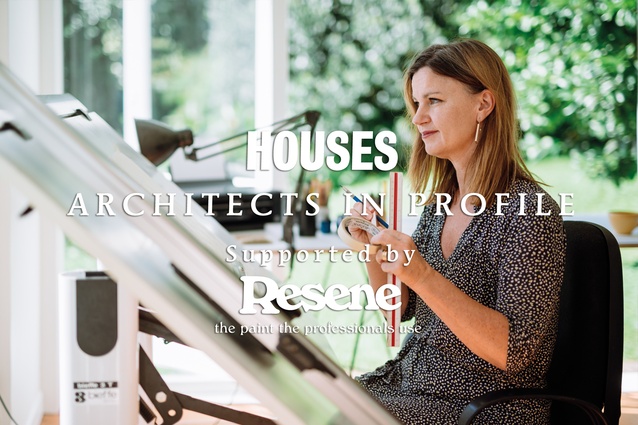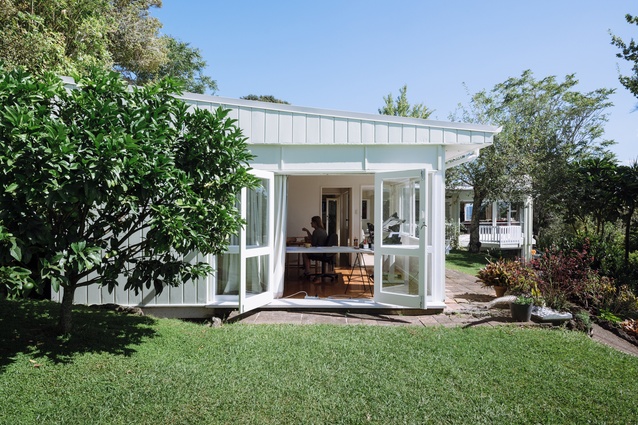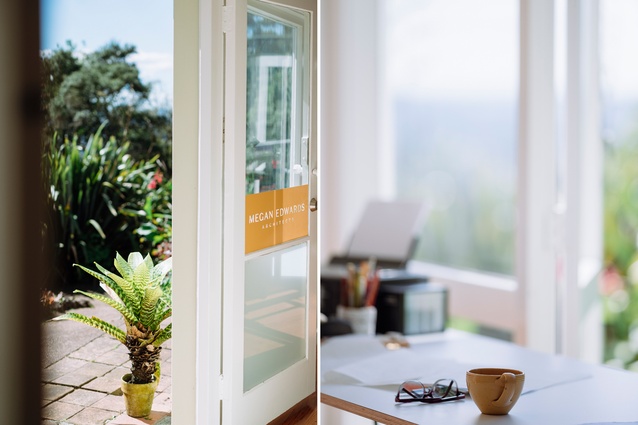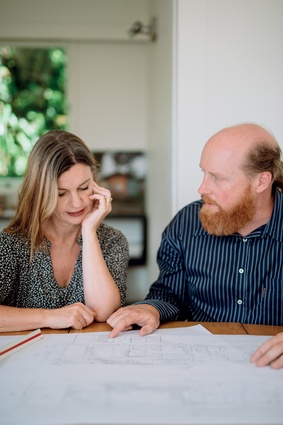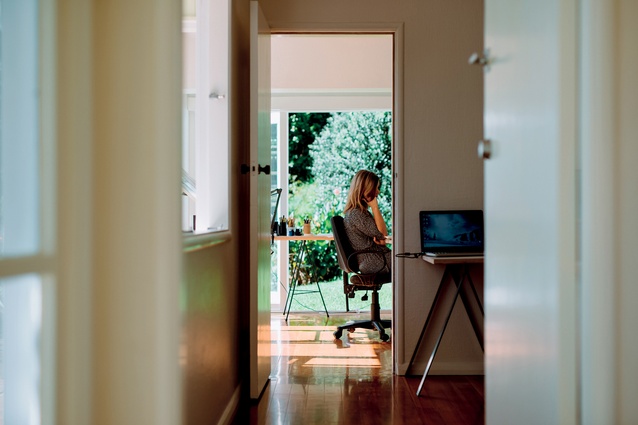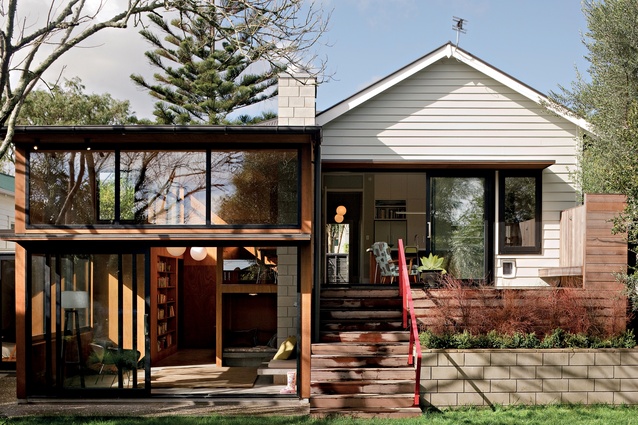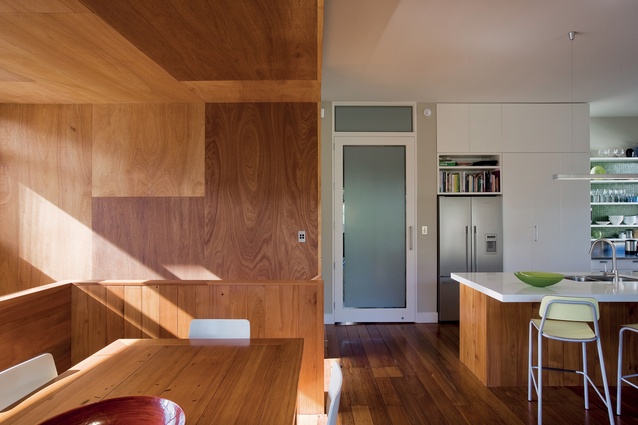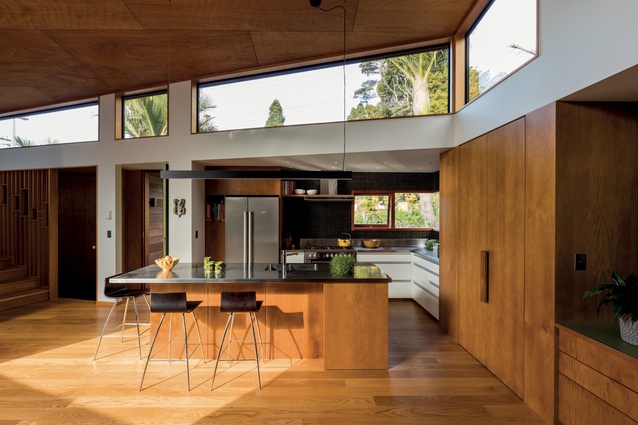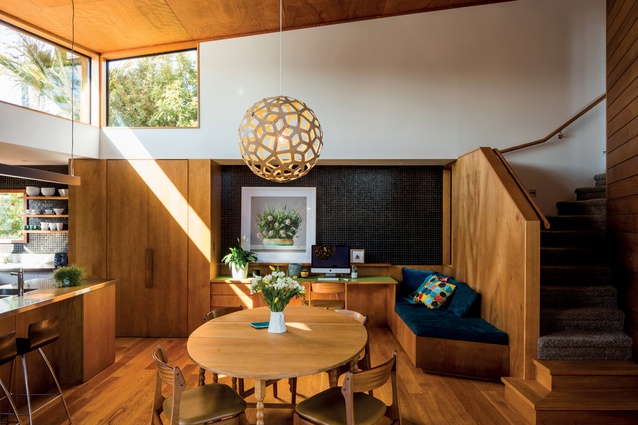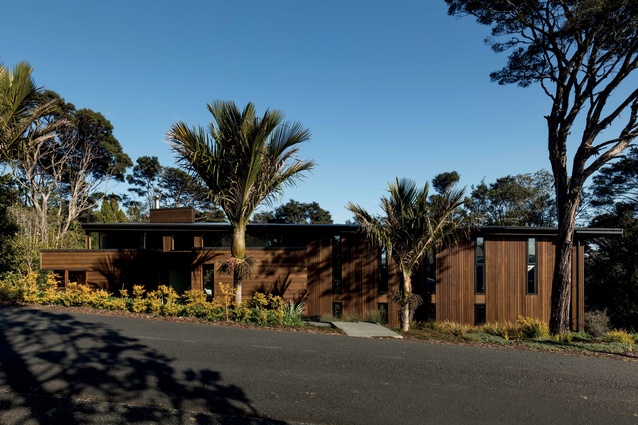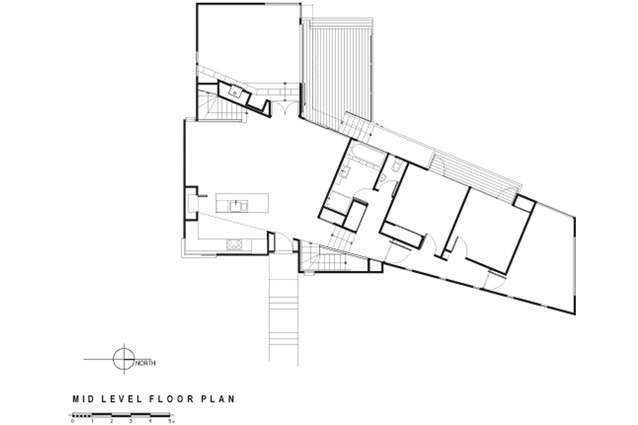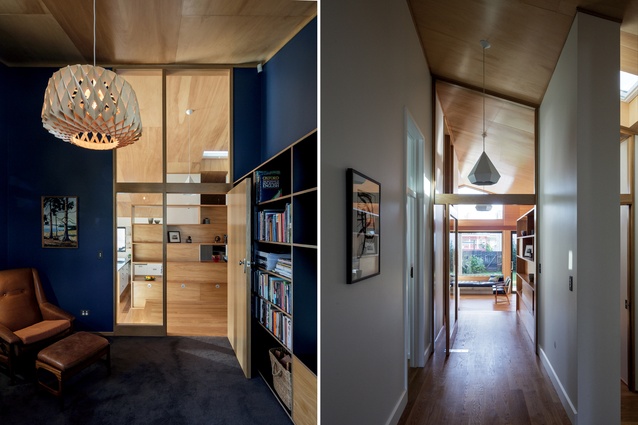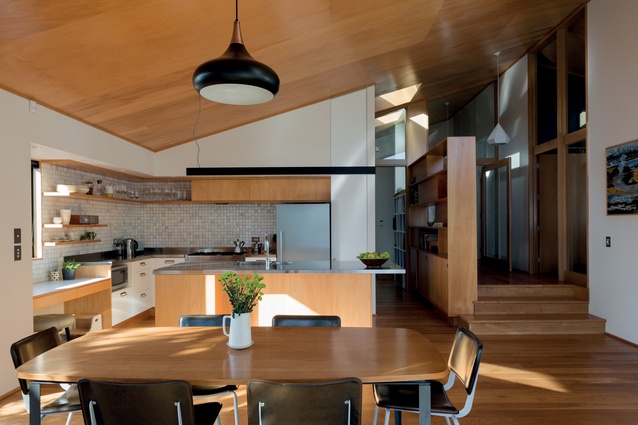Architects in Profile: Megan Edwards Architects
Based in a Tibor Donner-designed house in Titirangi, Megan Edwards’ studio creates homes imbued with a strong sense of identity and place, while working to make the process of architecture thoroughly enjoyable.
Justine Harvey spoke with Megan Edwards and Allan Eng of Megan Edwards Architects at their picturesque studio in West Auckland to find out more about this boutique practice.
Justine Harvey (JH): Your studio has recently based itself in a house in Titirangi designed by Tibor Donner, who was Auckland’s city architect from 1947 to 1967. Why the change of space?
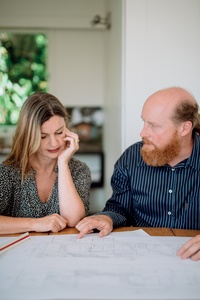
Megan Edwards (ME): It is about creating a good working life and we are all very keen on making the process of designing, and of working alongside people to make architecture, enjoyable, with a focus that is not only on end results. Our new office environment is part of that.
The Donner house is apt for our practice as we have taken our design cues from the qualities of many of the interesting mid-century houses that are tucked away in the Titirangi hills, which we have discovered while living here. There are many experimental houses for architects and artists, which were built from the 1940s to the 1970s; these were people committed to making New Zealand ‘home’ by developing a vernacular modern language of architecture.
This house we’re working from was designed for the Henry Atkinson family in 1945–46 [Atkinson was a civil and water engineer who bought large blocks of land in the Waitakeres, which he later gifted back to the city – Ed] and it has a cool 120-degree plan with a mono-pitched roof, cleverly sited high up over the city.
JH: You’re both graduates of the University of Auckland, although you’re not contemporaries: correct?
ME: That’s correct, yes. I graduated in 1998 and then I worked for Andrews Scott Hill (now ASC Architects) for about 18 months and then went to London for four years, where I was fortunate enough to get a wide variety of experience with different practices.
Allan Eng (AE): I graduated about 10 years later. Interestingly, we have had similar career trajectories, only I didn’t go to London. We’re both Auckland graduates, both worked for biggish firms for a short period and then started doing our own thing.
JH: How did you come to be working together?
ME: I designed a project for Allan’s in-laws. One day, they happened to mention that their daughter, Rachel, was seeing an architect – she and Allan were living in Christchurch at the time – and a dialogue grew from that.
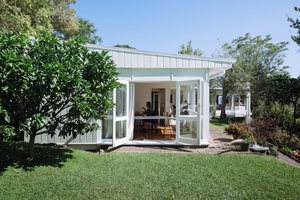
AE: This was pre-earthquakes and I had my own practice at the time and started doing work for Megan from afar. I had, actually, made up my mind to move back to Auckland before the earthquakes but they just solidified the idea. We moved and Megan and I have worked together more and more until I effectively ended up moving into the practice. How long would you say we’ve been working together – 10 years?
ME: Yes. It was one of those happy coincidences where we had complementary skills and it has worked out well.
AE: I think we looked back and realised that the most successful projects we had produced were the ones in which we had worked together. We don’t have a strictly defined division of labour by any stretch and, because we’ve both been sole practitioners, we can slip into all of the roles quite easily. There’s nothing that we’re not comfortable with so our projects are collaborative in that sense.
ME: It’s particularly rewarding when we’re all in the office together. It brings a clearer perspective to the whole approach. Even casual comments that can happen when you’re in the same space, which may not have been voiced when working remotely, have the ability to shape a project in a real and tangible way.
JH: Is being able to criticise each other important for architects?
AE: Yes! We’re far too polite in New Zealand. People tend to forget that criticism is entirely subjective; it is not personal or, at least, it shouldn’t be. Positive criticism has the power to make us question and holds us to account. Everybody benefits from that.
JH: Does that translate into your external working relationships?

AE: As architects, we ask a lot of other people – clients, contractors, craftspeople – so we need to be able to stand with hand on heart and say: “What I’m about to ask you to do is a lot, I know, but I truly believe it is the right thing to do”. If you demonstrate that ability to have the dialogue, to take people and their ideas seriously, then you do gain more buy-in from them and, in turn, they become more willing to share their ideas.
JH: Although you both have experience in the commercial realm, your focus has been on residential architecture. Is that your passion?
ME: Historically, a lot of my work has been renovations – sorting out the rear ends of people’s villas and bungalows. I really like the challenges those projects bring in terms of their individual constraints – typography, orientation and the like. Those are aspects that you can grab onto and run with.
AE: The other thing that I’ve identified recently is that we’re now working on houses that have already had interventions. It’s almost like there’s a second round of renovation, where owners who redeveloped their houses in the 1990s are now coming back.
JH: Do you feel the need to design denser housing for our cities?
ME: Yes; we need to think creatively about not only architectural solutions but also social and financial solutions – and architects have an important role to play. We’re interested in cooperative housing schemes, where a project might be self-developed by a group of people, avoiding developer margins and boiling the key elements down to what really matters for that group.
We’re also encouraging clients on inner-city suburban sites that have been rezoned to allow higher density to consider working collaboratively with neighbours. There is an opportunity to find more-coherent, higher-density solutions. Even though our work to date has been helping one-off clients to create even nicer houses and lives, we would very much like to contribute in this space, and are looking for opportunities and gathering interested parties.
***
Mount Eden Villa
Mount Eden, Auckland
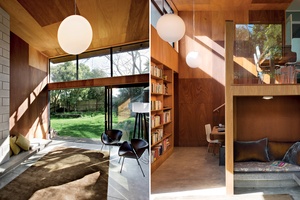
This renovation of a traditional villa (completed in 2009) in one of Auckland’s older suburbs, Mount Eden, essentially involved grafting two new lean-tos onto its northern face. One new structure is functional and includes the garage, a spare room and bathroom, while the other is a long, light-filled space that transforms the experience of the house.
A 2m drop between the villa and the garden was an opportunity for the architects to create a double-height space to help enliven the interior and enable a greater connection and experience of the garden. “We are always looking for opportunities to find something to exploit to make the design more interesting; in this case, it was the double-height volume,” says Edwards. “We wanted interconnecting spaces where social activities can happen and we were looking for a few different ways of creating internal relationships between the upper floor and the double-height volume.” This can be seen in the way the dining space overlooks the study.
Tawini House
Titirangi, Auckland
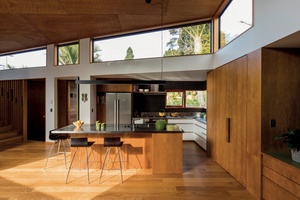
This new family house (completed in 2013) is situated on a steep bush-clad site in Titirangi and was built by the owners themselves, who were keen to explore the tradition of experimental house building of which this suburb is renowned. “Glazed vertical slots in the wall mimic the surrounding trees on the site, allowing privacy from the street, because the house sits right next to a road in a cul-de-sac.” explains Edwards.
East light comes in over the top through clerestory windows, emphasising the volume of the interior and the sense of light and openness. “We designed dark and light areas,” says Edwards. “The darker spaces contrast with the lighter areas, such as the main living area, while the cosy rooms are darker.”
The architects describe the site as “scarily steep” and have tried to create a feeling of safety in the house, which hangs out into the bush with two decks. A sense of enclosure is emphasised with the interior spaces arranged under a single roof plane, which falls eastwards over a boomerang-shaped plan. The kitchen/dining/living space sits at the heart of the house and features a double-height volume with a kite-like ceiling lined in plywood.
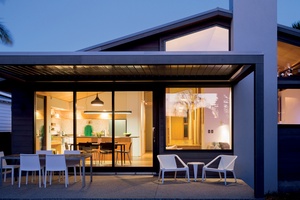
Point Chevalier Bungalow
Point Chevalier, Auckland
This renovation (completed in 2012) of a modest Californian bungalow, typical in Auckland’s Point Chevalier suburb, was desperately needed to fix a cold and unpleasant environment. “There was a latent opportunity to open up to the height of the gable,” explains Edwards. This draws in more light and adds volume to the internal spaces.
The architects have stepped up the flat ceiling of the old bungalow to express the sloping gable form of the roof, creating a journey through the hall to the rear living spaces – a gradual opening up to the gable form in both plan and section. “We wanted to create a chapel-like volume at the rear that is surprising, as well as a layering of spaces,” she adds. The design creates a rich internal landscape of living spaces with a darker, more enclosed living area at the higher level; this provides a refuge and lookout point into the open-plan living area. A cabinetry screen and full-height internal joinery create an interweaving of spaces.
Our Palette
Materials and Concepts
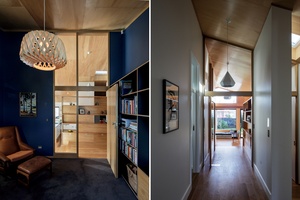
Megan Edwards Architects has a sensitive and personal approach to design that works to understand and engage with every element of a build.
Identity and place
“We aim to find an idea or theme that captures all the elements of the project,” explains Edwards. Her practice identifies what is distinctive about a site and/or context and develops an architecture that engages with or heightens these qualities.
Crafted details
“We like beautiful, handcrafted things, mixed in with modernism,” says Edwards while Eng is particularly obsessed with making things: “It’s a personal fascination. I like to build the thing in my head first, and then go through the detailing with the builders.
Hand drawn
Edwards loves the informality of drawing her concepts by hand. Eng explains, “If you show a client a concept that’s drawn in CAD, it has a sense of finality but, with a sketchy hand drawing, it has the sense that we’re still pushing ideas around.”
Journeys through space
The architects try to create spaces that talk to each other: where a journey occurs, linking activities but also creating a sense of mystery. “We enjoy interlinking spaces that are each something of themselves – not just a box that spills out to the outside,” explains Edwards.

